Ciabatta bread, homemade recipe step by step

Ciabatta bread, despite its Italian origin, has been well known in our country for years, due to the popularity that highly honeycombed breads have acquired in recent decades. Although I tell you one thing: the more holes, the less the slices hold our fillings or toppings.
As a general rule, the more hydrated a bread dough is, the more airy the crumb we get when baking it. Highly hydrated doughs are somewhat difficult to handle, but precisely for this reason they do not need a complicated or exact shape like other less hydrated dough breads. The dough is fermented and cut into large pieces that are hardly handled before baking, which is why They are relatively affordable breads for those who do not have a great experience in baking.
To make this bread, I use the method of popularizer Ibán Yarza, who uses a good amount of liquid preferment, the poolish, to which once well fermented add a small amount, in comparison, of flour and water. The result is excellent.
A preferment is a previous ferment to the elaboration of a bread that is prepared with a part of the flour and the water of the recipe in question, in variable proportions according to the type of preferment desired, without the need to knead it and with a small proportion of baker’s yeast that makes it fermentation is slow. The object is to get flavor and character in the bread while the fermentation is shortened once this preferment is kneaded with the rest of the ingredients.
I encourage you to try this bread even if you haven’t made a lot of bread before, because you will get great bread that will leave you wanting more. Is a ideal recipe to get a taste for homemade bread, not in vain is one of the breads with which I started. Come on, you have homework.
recipe information
-
- Preparation time: 6 hours
-
- cooking time: 40 minutes
-
- total time: 6 hours and 40 minutes
-
- rations: 3 bars
-
- Category: bread
-
- type of cuisine: Italian
-
- Calories per serving (kcal):875
Ciabatta bread ingredients
For preference or poolish:
-
- 450 g of bread flour
-
- 450g of water
-
- 3 g freeze-dried baker’s yeast (or 9 g fresh yeast)
For the final dough:
-
- All preferment or poolish
-
- 300 g of bread flour
-
- 120g of water
-
- 14g of salt
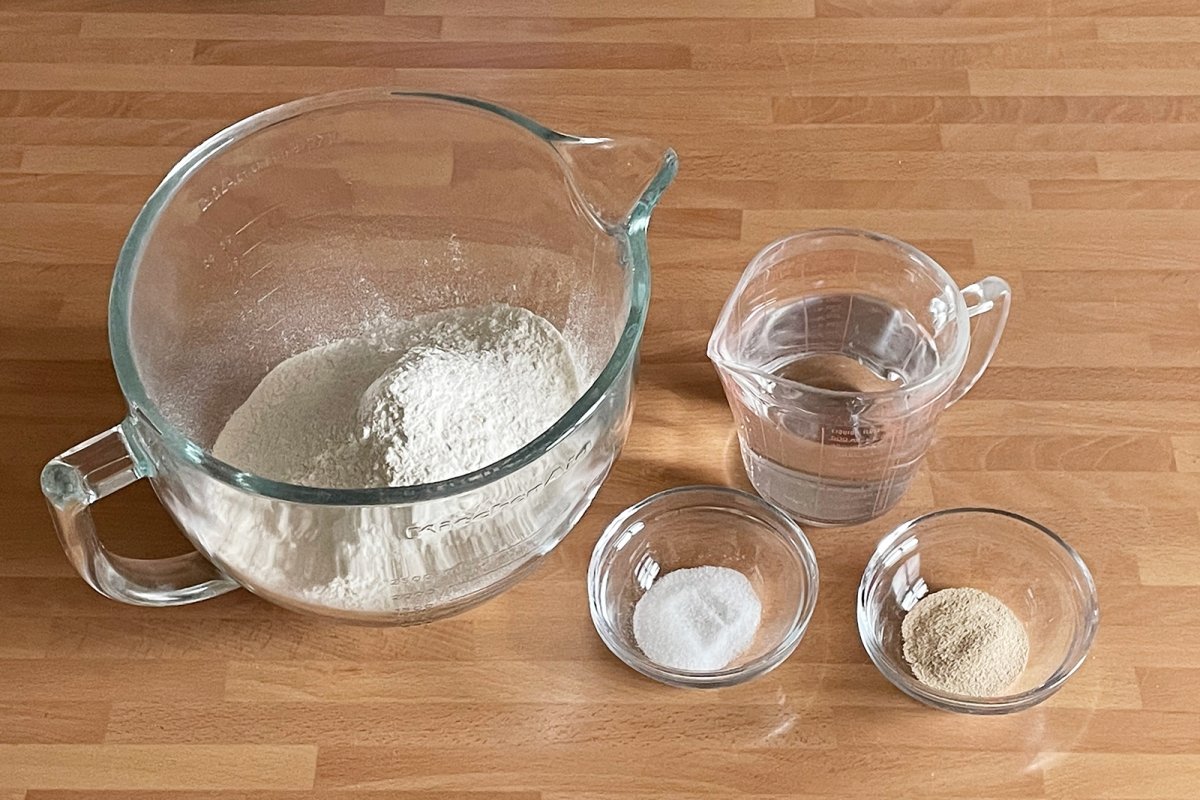
How to make ciabatta bread
To make ciabatta bread, it is necessary to prepare the preferment or poolish that will be used in the final mass, as indicated below.
How to prepare the preferment or poolish
Weigh all the ingredients on a scale. Put 450 g of bread flour in a bowl and add 3 g of freeze-dried baker’s yeast or 9 g of fresh yeast.
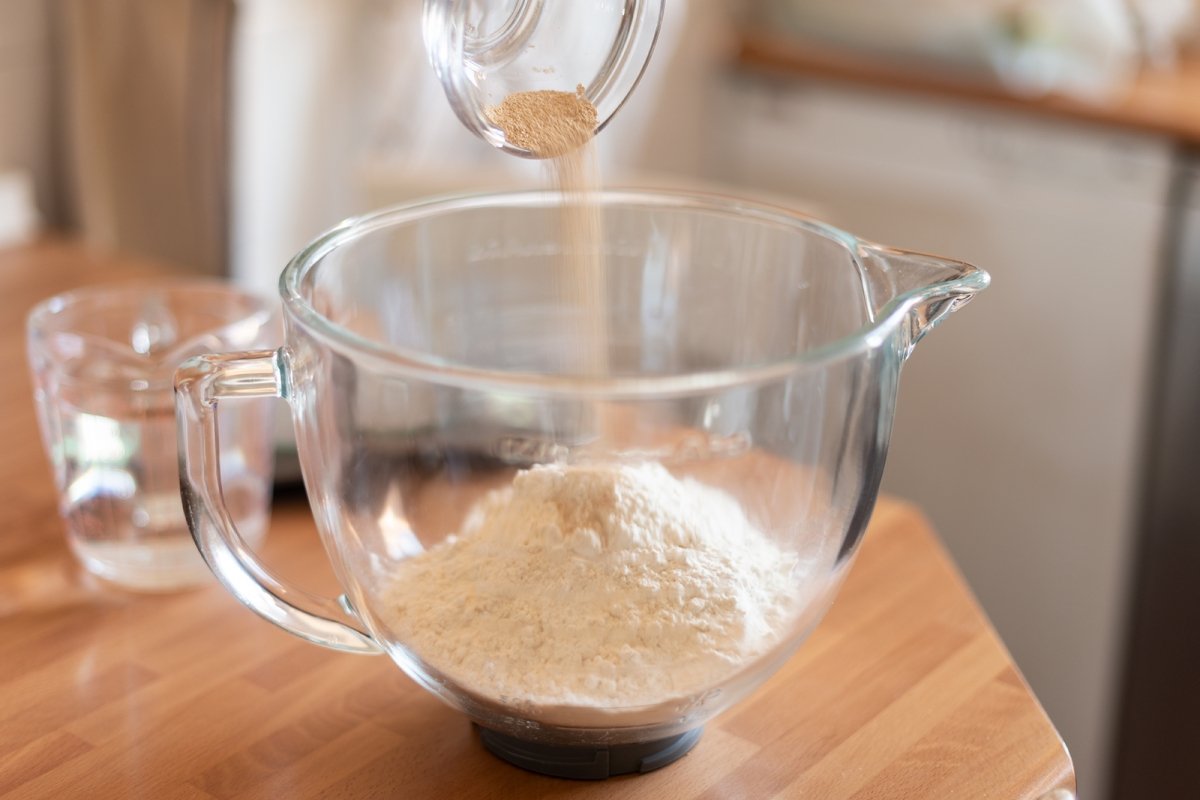
Add 450 g of lukewarm water.
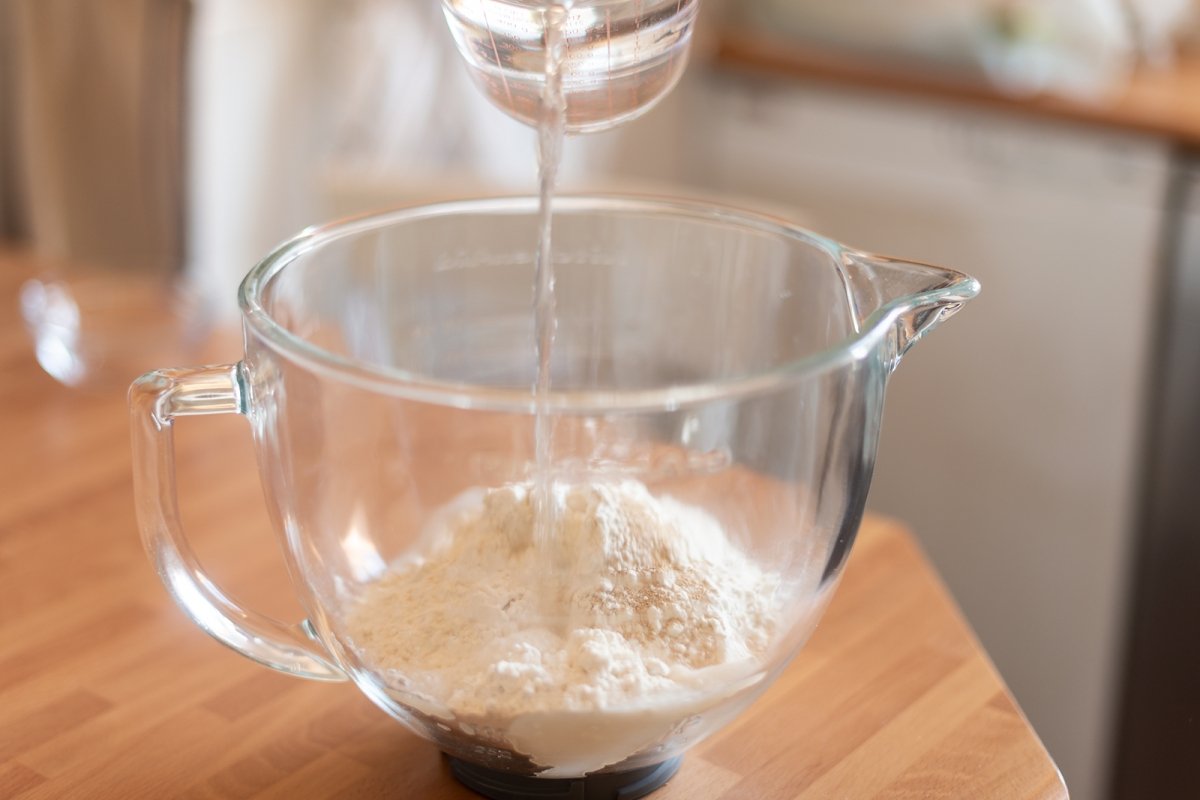
Mix the preferment with a wooden spoon, spatula or whatever is easier until it is more or less homogeneous, without lumps of flour.
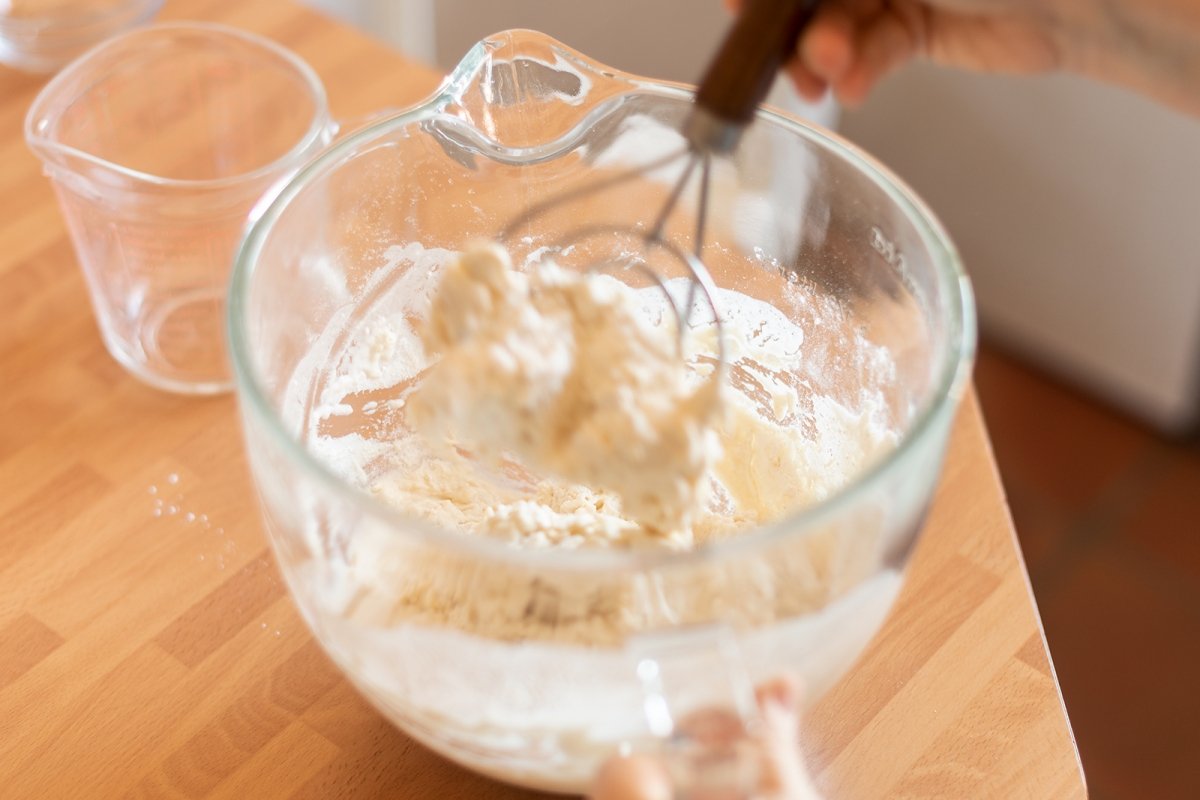
Cover the bowl or container (it should not be airtight, as gas is produced during fermentation that must be able to escape) and leave to ferment until practically triple the volume and is well fluffed, for at least three hours.
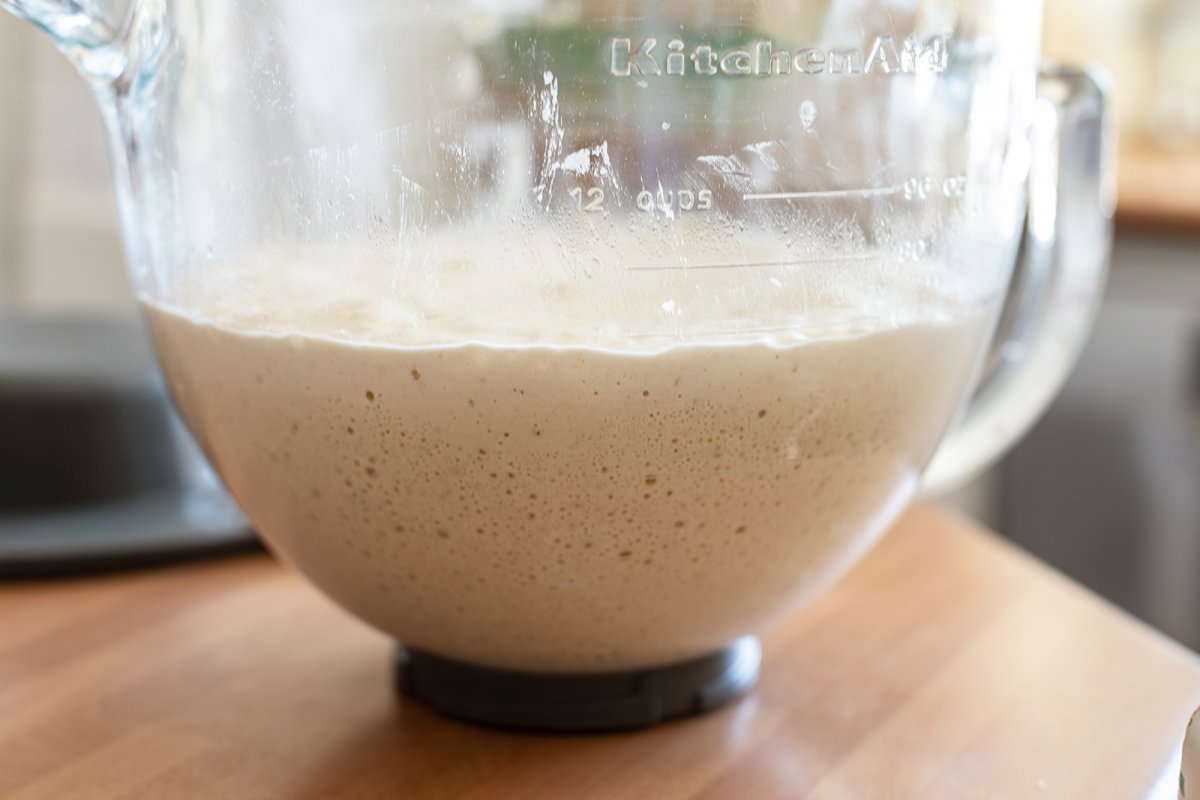
How to prepare the final dough and ciabatta
Once the fermented poolishadd to this 300 g of bread flour.
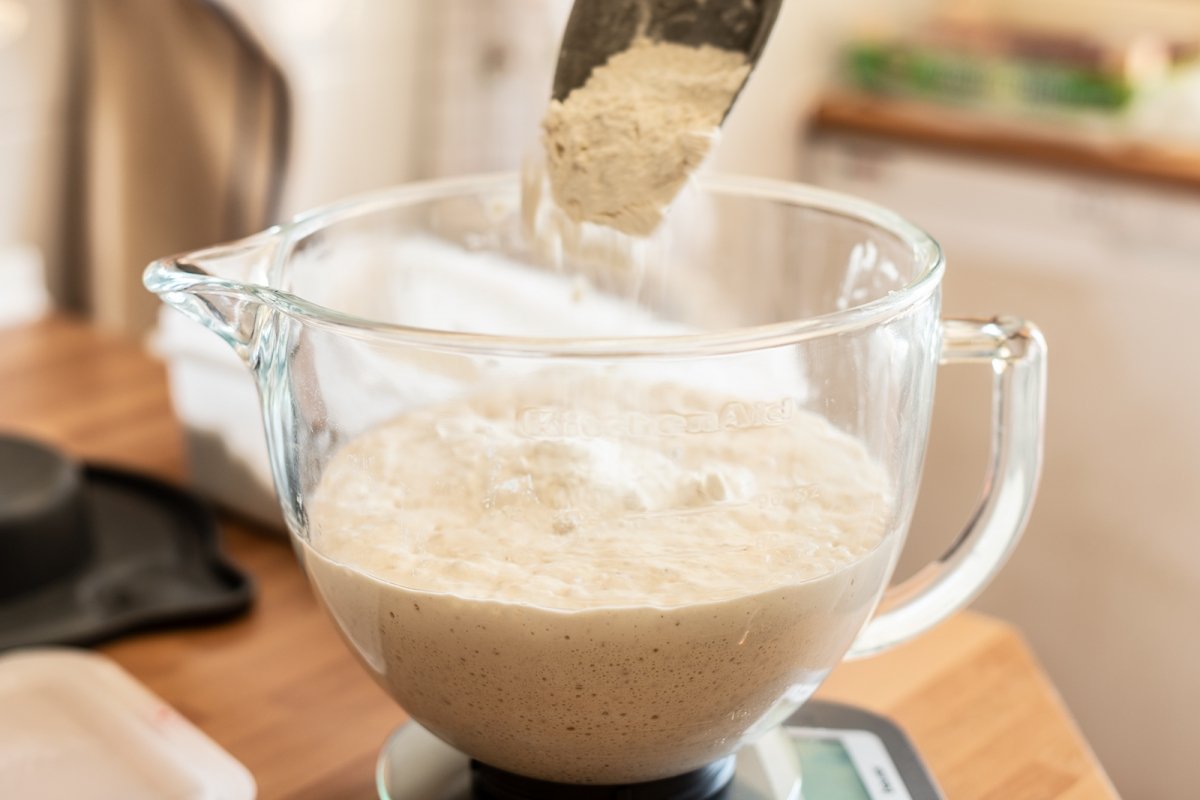
Also add 120 g of water and 14 g of salt.
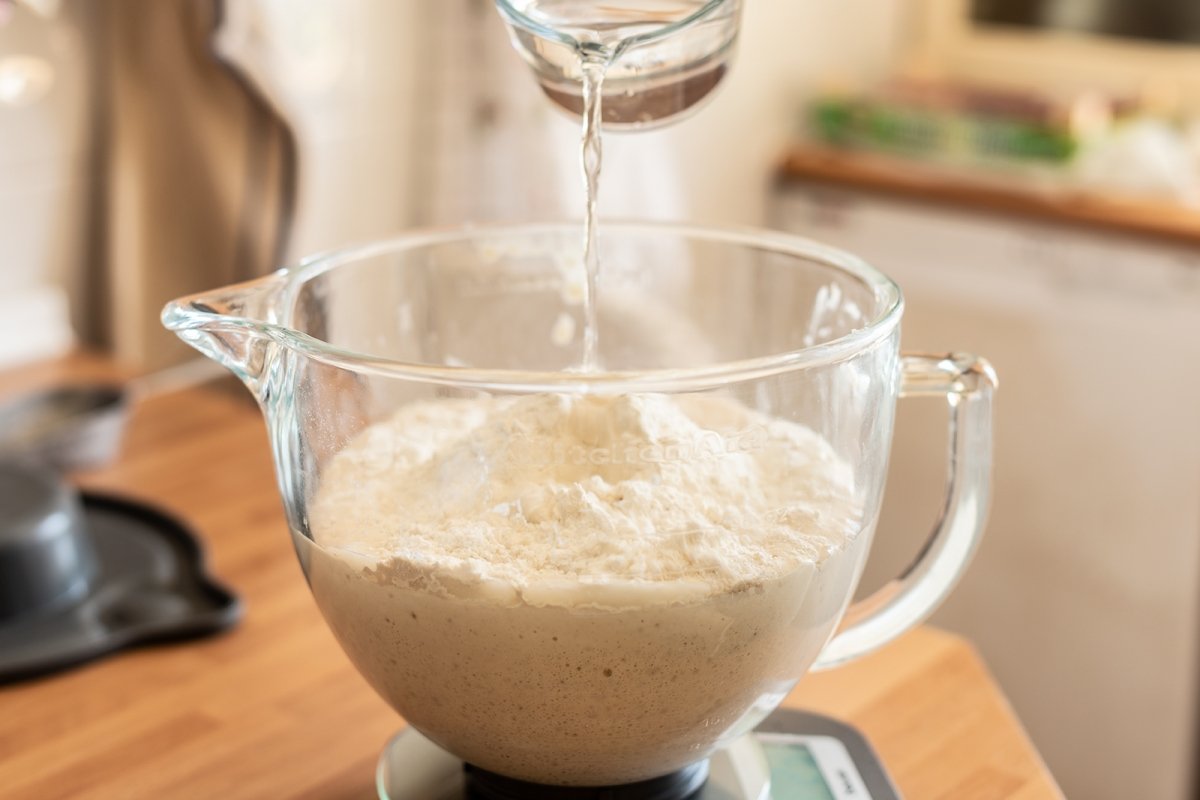
Mix well with a spatula or wooden spoon; It is a very sticky dough, which can be kneaded well with a robot or by folding it.
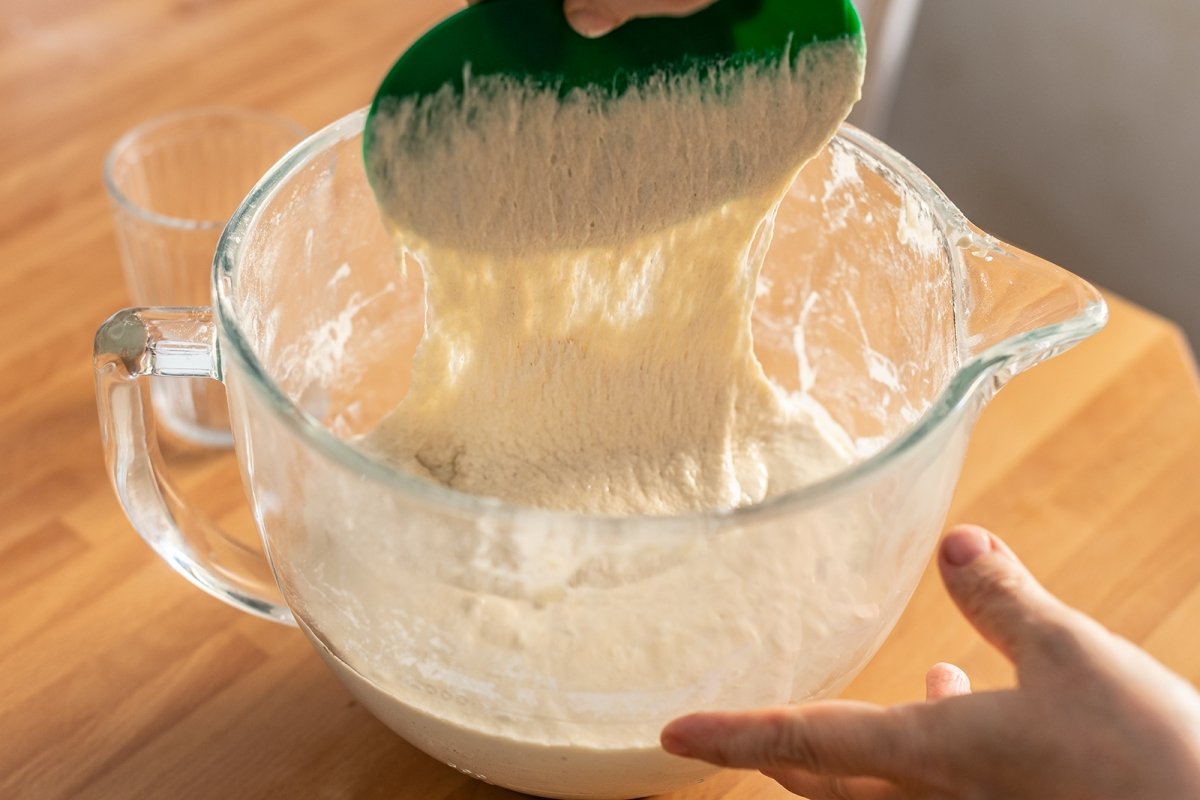
If you do not have a robot, to make the folds pass the dough to a large container to make them inside it.

To fold the dough, dip your hand in water and lift the dough at one end, folding it on itself. Proceed in the same way with the opposite side of the dough, so that at the end we fold it into three parts as if it were the paper of a letter to put it in the envelope. Repeat this type of fold about five times separated from each other by 10 minutes of rest (always covering the dough). Little by little you will notice that the dough is becoming more elastic and fine.

Next, let the dough rest for 30 minutes and make another fold. Let rest again for 30 minutes and, if the dough is still not very swollen and fluffy, let another 30 minutes pass. You always have to wait as long as necessary until the dough is clearly inflated.
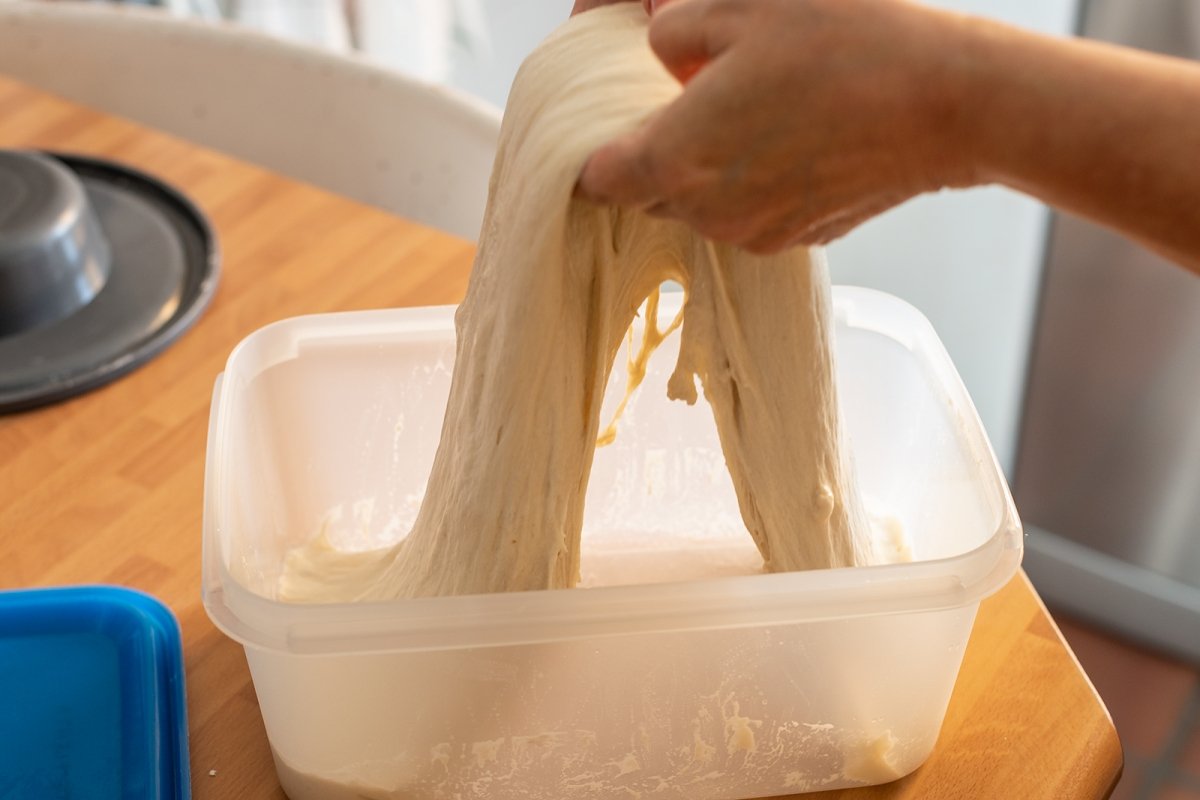
Turn on the oven so that it heats up to 250 °C while we form the ciabattas and abundantly flour the table where you are going to work; this is very important as the dough is very sticky.

Gently tip the dough over the flour, trying to manipulate it as little as possible so that it detaches from the container.
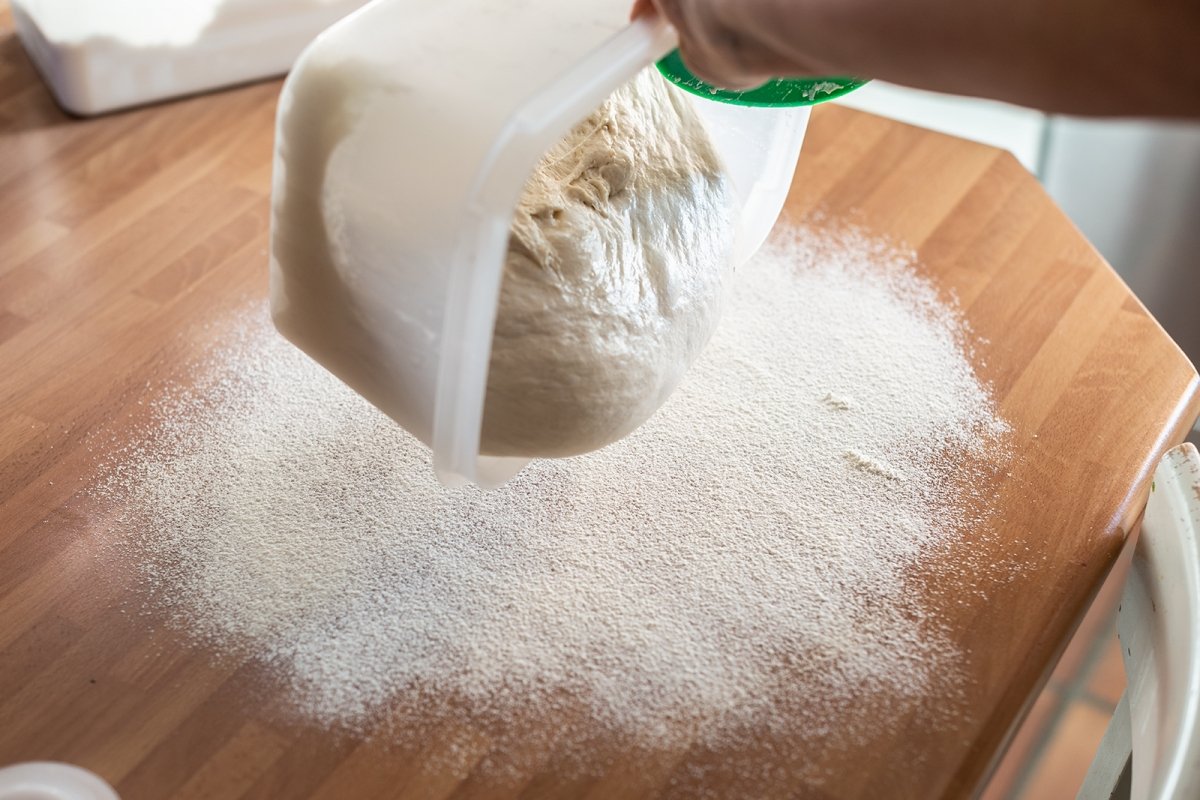
Flour the dough again abundantly on top.
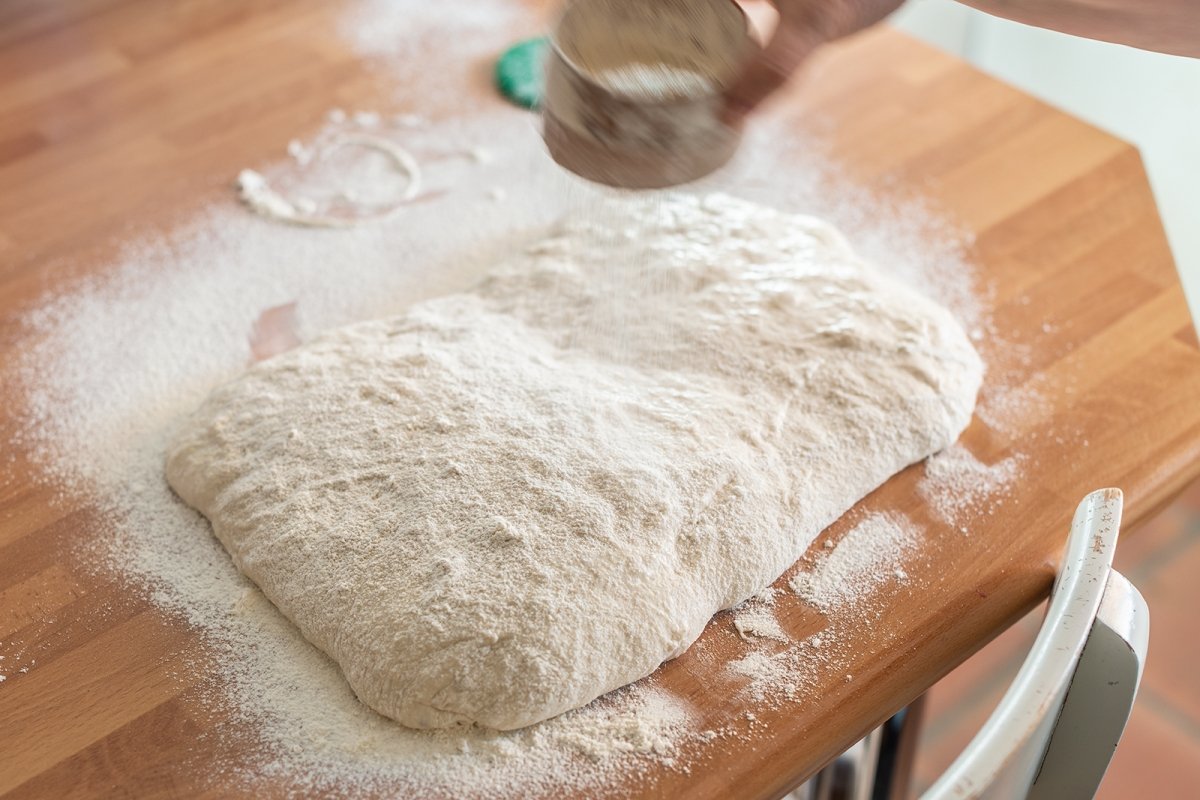
Inserting a scraper under the dough and handling it as little as possible, give it a rectangular shape as seen in the photo.
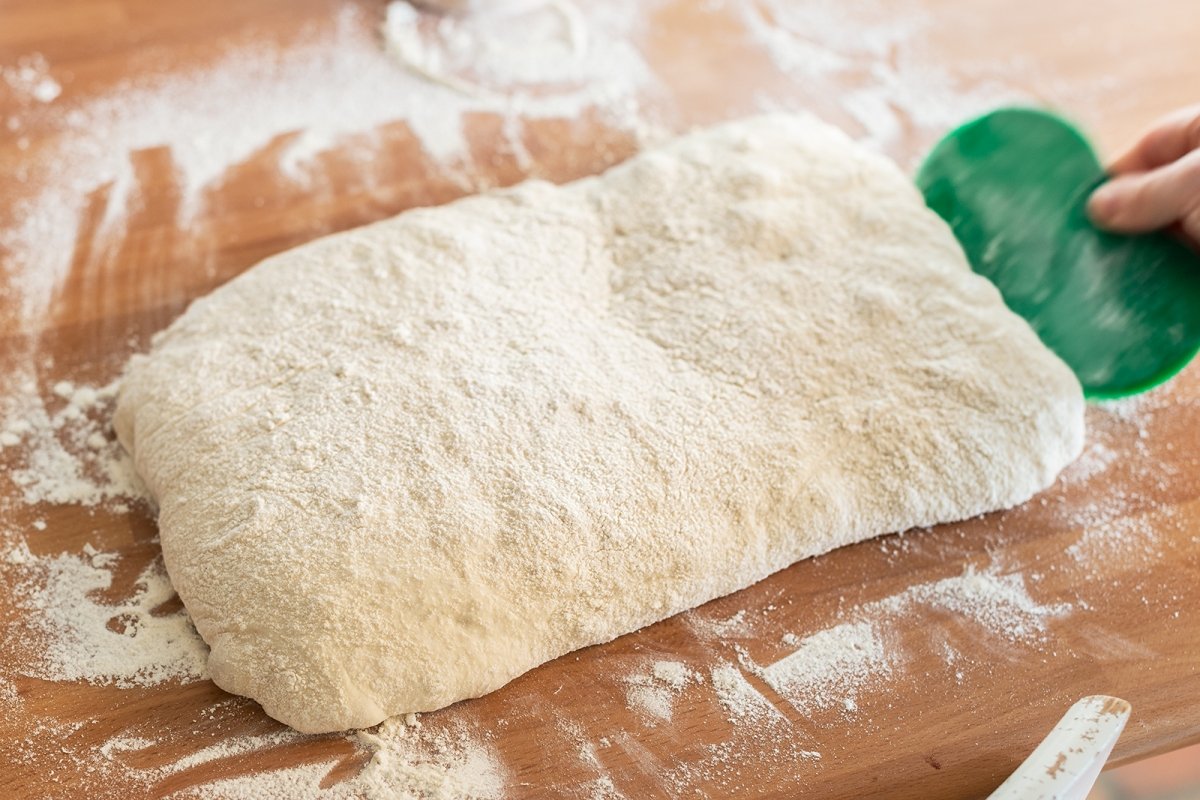
Divide this rectangle into three rectangles that will be our ciabattas, sprinkling more flour in the cuts of the dough so that they do not stick.
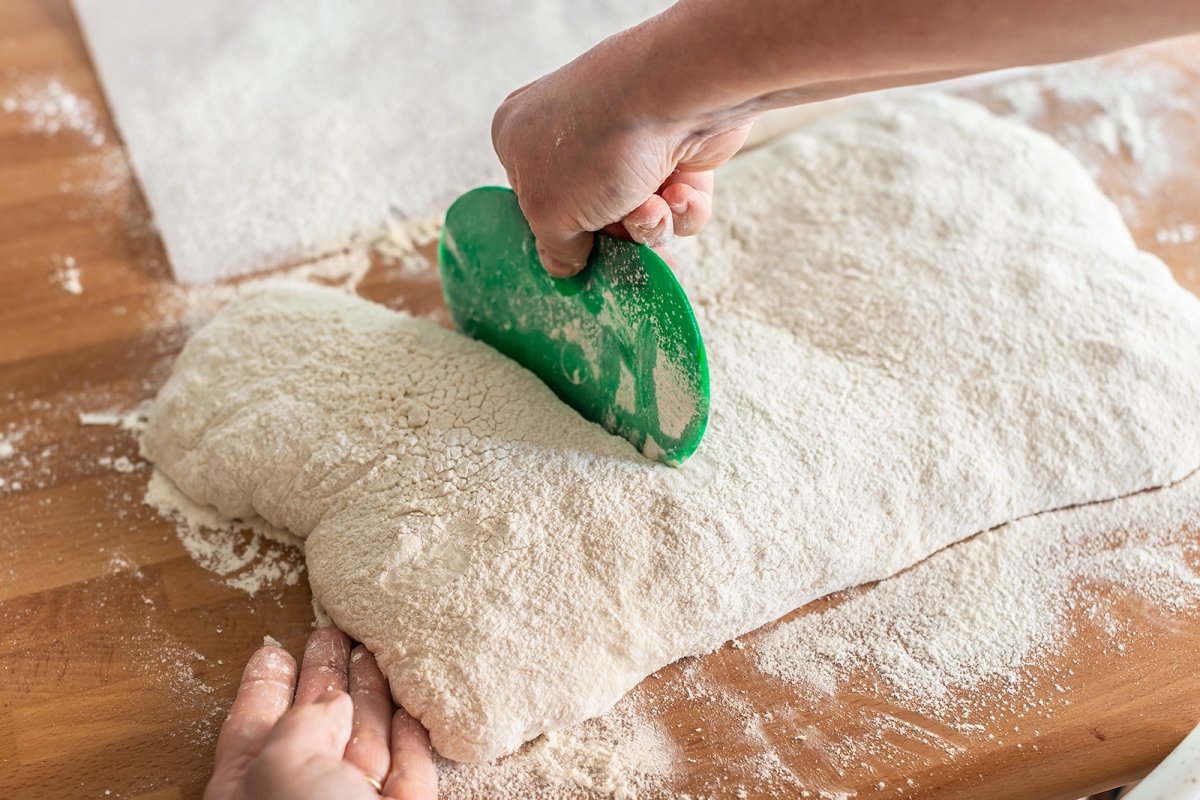
With the help of a scraper or a large spatula, transfer the formed ciabattas to baking paper, stretching them slightly lengthwise. It is important to treat the dough delicately at all times to remove as little gas as possible, we want the dough to remain very inflated.
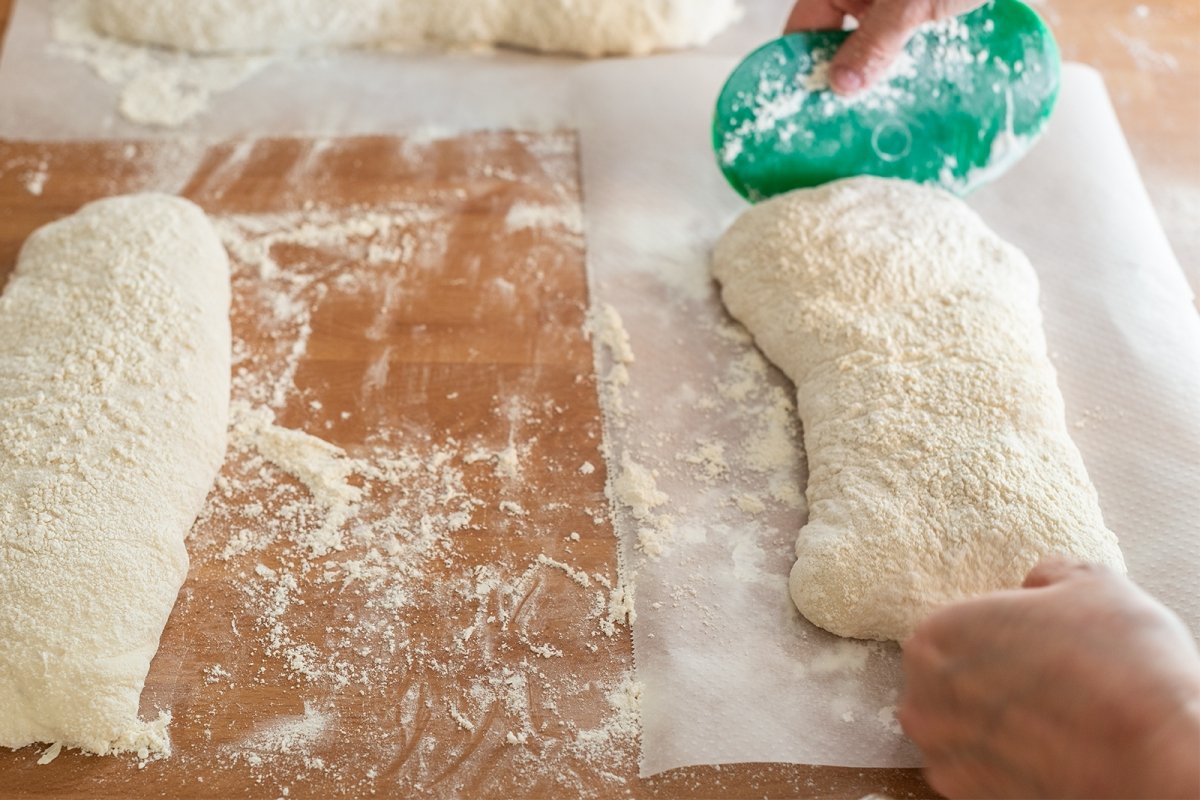
Dust the bars with flour and let rise again, until they feel very puffy, at least 45 more minutes. Just before putting them in the oven, mark them by slightly dipping your fingers into the dough at several points; this helps the alveolate of the crumb to be irregular.
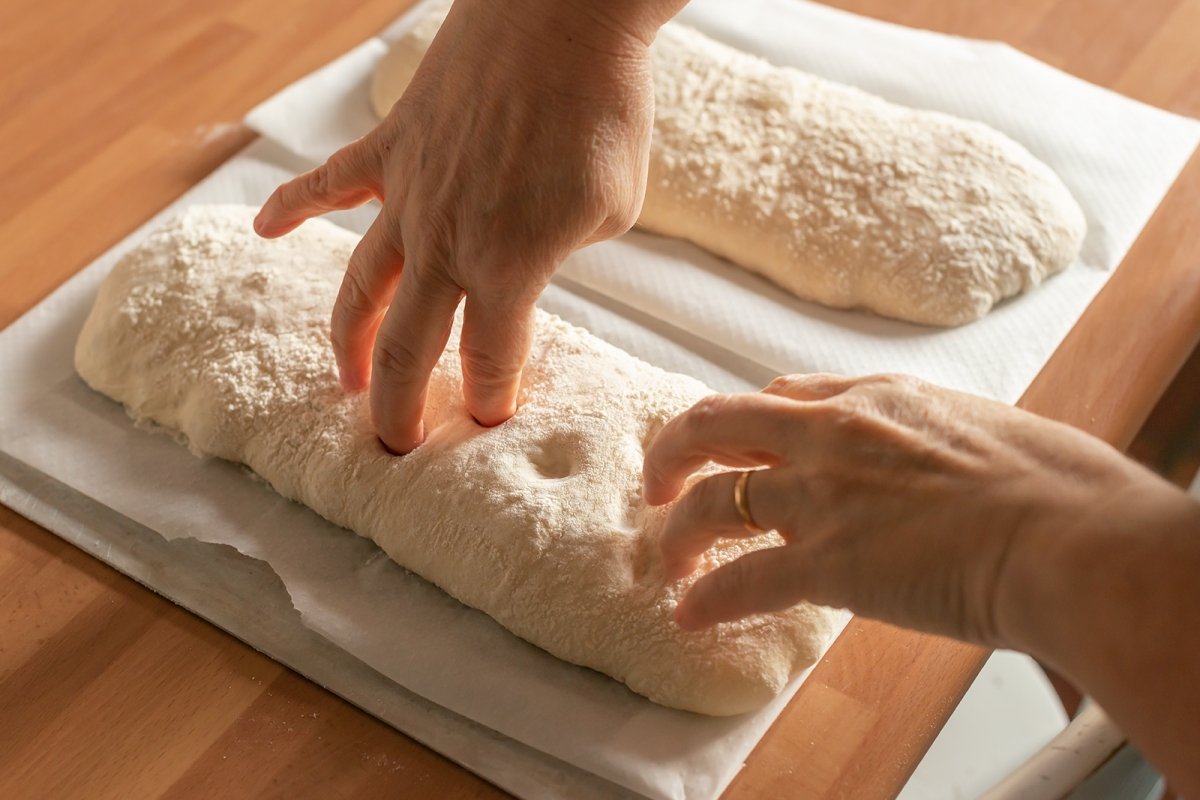
Put the bars in the lower third of the oven, spraying some water at the same time, and cook them for 15 minutes. When they have risen and are beginning to brown, lower the temperature to 220°C and continue for another 15-20 minutes. Turn off the oven and let them cool with the door ajar for another 10 minutes. Remove the bars to a rack and wait for them to cool completely before tasting them.

Easy preparation summary
-
- For preferment or poolishcombine the flour with the yeast in a bowl
-
- Add the warm water
-
- Mix until there are no lumps of flour
-
- Cover and let ferment until almost tripled in volume
-
- For the final doughadd the bread flour to the poolish
-
- Add the water and salt
-
- Mix with robot or with folds
-
- If you do not have a robot, transfer the dough to a large container to make the folds inside it
-
- To fold the dough, lift it at one end with a wet hand, folding it on itself and repeat on the opposite side as if it were a letter. Repeat about 5 times at 10 minute intervals
-
- Let rest 30 minutes and make another fold. Let rest for another 30 minutes and, if the dough is still not very swollen and fluffy, let another 30 minutes or as long as necessary
-
- Heat the oven to 250 °C and abundantly flour the table
-
- Gently tip the dough over the flour
-
- Flour the dough again abundantly on top
-
- Give the dough a rectangular shape
-
- Divide into three rectangles that will be the ciabattas
-
- Transfer the ciabattas to baking paper and stretch them slightly lengthwise.
-
- Dust the bars with flour and let them rise for at least 45 minutes until they feel very puffy. Before baking, sink your fingers into its surface
-
- Bake the bars for 15 minutes at 250ºC and 15-20 minutes at 220ºC, turn off the oven and leave the door ajar for 10 minutes before letting it cool completely on a wire rack















Welcome to Sweet Eats Cakes
Where delectable dreams come to life in the form of exquisite confections! Sweet Eats Cakes isn't just about taste; it's about turning moments into memories. Our cakes are crafted with precision, attention to detail, and a sprinkle of magic to ensure that each slice is not just a treat for the taste buds but a feast for the eyes!